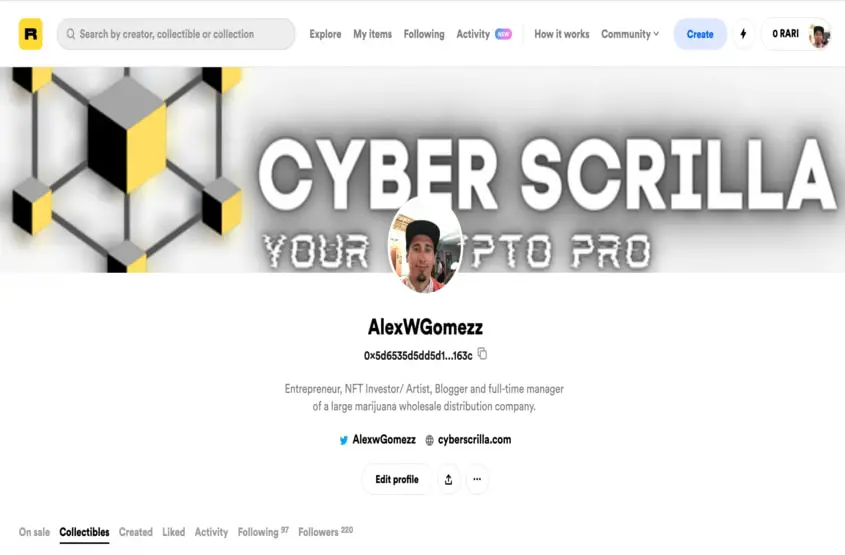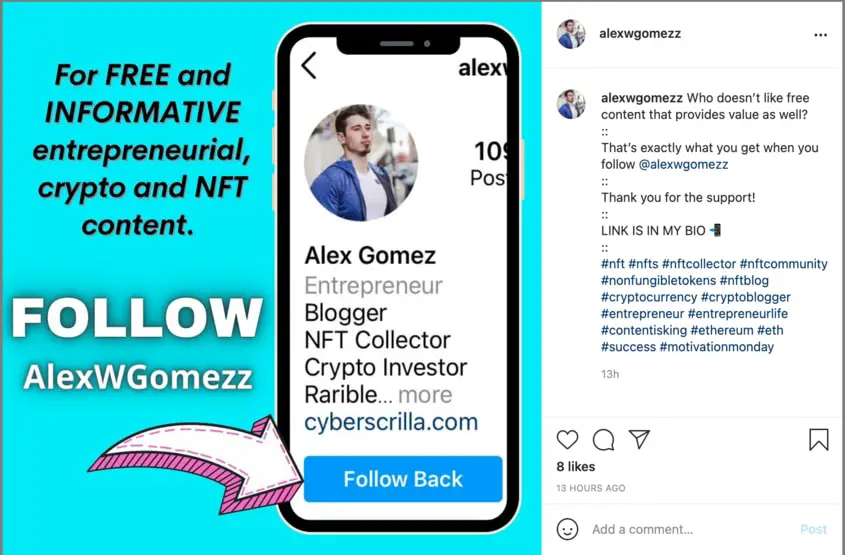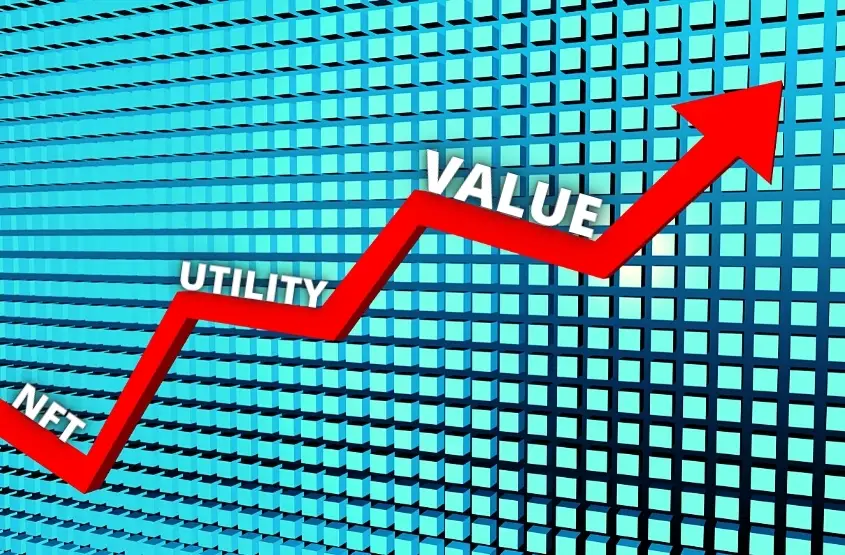There’s been a lot of news and talk about NFTs In in recent months. NFT photos seem to be selling for exorbitantly high amounts. This got me thinking, how can photographers benefit from creating NFTs? After extensive research, here’s what I’ve gathered.
NFTs benefit photographers by establishing a new level of trust, security, and control. Additional benefits include:
- Guaranteed payments on each sale without intermediaries
- Instant and secure payment for both parties
- Set the terms of usage for each photo, and
- Reach out to larger audiences through decentralized marketplaces
They also have the opportunity to gain higher remuneration for their photos based on the value and utility of their offering.
Let me explain some features of NFTs using analogies a photographer may easily understand.
How Can Photographers Benefit from NFTs?
Tokenization
A decade ago, if you have a photo that you wanted to commercialize, you would get it copyrighted. You would go to the US copyright office and then register your photo. This would ensure that you have some security on the rights of the photo and its usage. No one could use it without explicit permission from you.
Now when you register your photo you get a token from the US copyright office. This token has details about your work that can be easily verified. Once verified, the token then is used to establish your rights to prevent anyone from using your work without your permission.
NFTs function similarly except that you are doing a similar action in the digital world. In the digital world, there are no specific government rules but a decentralized platform maintained by blockchain technology.
Scarcity
Another way to look at NFTs is to imagine that you have taken your wonderful photograph and you produce only two digital prints of it. You now want to sell them. Because you’re only going to sell two, there is scarcity that is generated.
This can increase the value of your digital prints due to limited quantity if there is high demand. If your photos are exceptional and rare, the buyer would be willing to pay a higher amount. By having a scarce item the buyers are eager to obtain it for themselves as they can resell it for great value or brag that they have the original copy of the limited editions.
The photographer can then auction it off and get the highest possible price for their work. Using NFTs photographers can create limited prints of the photographs and make them available for sale on the NFT networks. Once the photographs are minted NFTs, each one will have a unique token issued and registered on the blockchain.
Now the details of the ownership and authenticity of the NFTs can be verified by anyone accessing the blockchain. This benefits the photographer as the verification can be done from anywhere and the photographer can sell the work from any location.
No matter how many times this photograph is going to be sold, the tractions are secure and transparent at the same time. So the blockchain becomes a decentralized virtual ledger that can be used to verify the authenticity of work. It also efficiently records all transactions and keeps an updated version of the transactions.
Non-fungible means that contrary to currency, they cannot be interchanged or replicated.
What is even cooler about NFTs is that smart contracts can be controlled by the creator to benefit from the work even after the initial sales. Imagine that you want to get continued revenue from your work even after you sell the item.
The contract can allow you to put the terms so that you can earn royalties each time a subsequent sale is made. This way, as your social status grows and your work becomes better known, it will carry more value.
Essentially, when somebody sells your work, you get a kickback out of your work which is now even more valuable. Since the value of your work is increasing, what you sell today for $500 might fetch $2000 in the marketplace a year from now.
So, you would be profiting from the sale by someone else who sells your photographs. No need to wait for payment. In fact, there is no need to ever track anything.
When the transaction is made the payment will come in automatically. The smart contracts set in the NFTs will ensure the enforcement of the contract.
Creating NFT Photography
Now we will discuss how you can create NFTs from your photography using the various platforms.
To start minting NFT photography you will need to use a digital wallet. Deciding which marketplaces you want to be on will determine which cryptocurrency you need to purchase and what kind of wallet you need. One of the most popular crypto wallets for ether is Metamask.
Once you register an account, you will need to purchase cryptocurrency using your card or via bank transfer.
To learn exactly how to mint your NFT, check out this article: A Beginners Guide To Creating NFT Art.
How to Mint Your Photos
You can use multiple marketplaces to mint your photography such as Mintable, OpenSea, Rarible, and SuperRare, to make them available to the public. You can upload your photographs and create categories, and also decide the properties for your photographs.
Once you choose your marketplace and mint your NFT, you will have the ability to post it up for sale for the entire world to see.
How to Sell Your NFT Photography
After you have minted your photos, it’s time to put your NFT up for sale. So, how do post your newly minted NFT photography for sale?
Selling your NFT photography can be achieved in a few simple steps.
- Choose your NFT marketplace
- Decide your NFT price
- Build An Audience For Your NFT photography
1. Choose Your NFT Marketplace

More than likely you have already chosen your marketplace if your photography is minted. Although all marketplaces are different, they offer similar sale structures. You can choose to have a set price or conduct your sale auction-style with a reserve price required to be met. You can write a description, set the duration of your listing, and choose your minting quantity as well.
You may also set up the ending price so that if the auction price meets the ending price that you set, then it will automatically complete the sale and end the auction.
There are multiple options that smart contracts provide where you can have different terms coded in. You can charge for displaying a photograph or limit the use of photographs in certain ways.
Each photo can have varying smart contracts which will automatically ensure that the guidelines are followed and activated in the right contexts. Smart contracts are your own agreement enforcers which will ensure that the terms are followed. All worrying and following up that used to accompany such deals are now unnecessary.
NFTs can allow you to set the terms and price. You can upload your work to multiple sites at the same time. The smart contracts you set will ensure that the funds are transferred and the files sent to the buyer even if it is years down the line.
2. Price Your NFT Photography
Deciding on a proper price for your NFT photography can be difficult, but it doesn’t have to be.
In order to price your NFT appropriately, you need to find out what your piece is worth. To find your NFT worth, you need to use the trial and error process. Price your NFT at a price you truly believe it’s worth, then it’s a matter of patiently waiting and networking until a buyer finds your piece and agrees upon the price.
It’s important to never undervalue your work. You deserve to be paid for your time, effort, and skill. On the flip side, overvalue your work and you may be stuck with a static NFT and no ROI.
3. Build An Audience For Your NFT Photography

Building an audience for your NFT photography takes consistency and patience. Promote your NFT photographs on social media and build up your reputation. Once attention is gained and interest is generated in your specific niche, your reputation will grow and as a result; your NFT becomes more valuable.
Social media is great for advertising your non-fungible token photography. Focus on gaining organic traffic by posting consistently and interacting with your community. It may be slow at first, but don’t let that discourage you. Keep posting, helping others, and be an active member of your community.
Here are some examples of NFT photography communities:
- Social media hashtags (#NFT, #NFTart, NFTcommunity #NFTphotography)
- NFT and photography forums
- NFT chat apps such as discord
- NFT and photography blogs
- NFT and photography podcasts
The most important factor when building your audience is to be yourself, provide value, post consistently and help others in your community.
How To Make NFTs That Sell
Stories such as Beeple selling his artwork for $69 million have inspired digital artists and photographers to explore the NFT marketplace to tap into the opportunity.
But it is necessary to understand that unless the work is exceptional it is highly unlikely to expect high payouts like Beeple’s. Most digital artists and photographers end up selling their work for a few hundred or thousand dollars. What is it that leads to NFTs selling for these astonishing amounts?
High-priced NFT sales are generated due to the perception built around the asset. If the audience perceives the NFTs to be of value and utility the buyer is likely willing to pay more for them.
Branding, talent, and creativity all play an important role when creating a high-value non-fungible token. If your work creates excitement and fascination, you have the potential to make a living in the NFT space.
Who Buys Valuable NFTs?
Mass amounts of cryptocurrency have been spent buying non-fungible tokens. What type of people are buying NFTs and why are they willing to spend some much is the question. After reviewing NFT sales I determined there are two kinds of people who buy NFTs.
Investors and collectors are the main buying power driving the purchase of these valuable and expensive NFTs. Investors benefit by gaining money from an ROI, while collectors enjoy buying intriguing and unique pieces in which they find their own value.
Let’s break down the two types of NFT buyers.
Investors
Investors are people who purchase NFTs in the hope of making a profit. Investors generally search for tokens with underlying value as well as the potential to increase in value in the future. Given that the photographs are rare and irreplaceable, if the investor perceives that a specific asset is going to be in demand and offers ROI, they will buy it.
There have been multiple success stories about people buying NFTs for thousands of dollars and then being able to sell them for millions of dollars. In 2020, an NFT art collector bought Beeple’s artwork for $67,000 and later sold it for $6.6 million dollars. It is these kinds of stories that are fueling investors’ urge to buy expensive NFTs.
Collectors
NFT Collectors are people who purchase NFTs for the love of the creator, subject, and the art itself. NFT collectors enjoy supporting their favorite NFT creator by purchasing their work and giving praise where it’s due. Collectors experience a personal connection with the creator because the authenticity; which is easily verified, allows that connection. Collectors buy because they like a piece, not because they expect a return on investment.
What Drives Prices In The NFT Market?

If you browse almost any NFT marketplace, you’ll probably notice prices ranging from a few dollars, upwards of hundreds of thousands of dollars. With that being said, what is the determining factor that drives the prices of these NFTs up so high? After some research, I came to this conclusion.
Value and utility is the driver behind an NFT’s price increase. To sell your NFT photos you need to ensure that these two factors are your prime focus areas.
Value is in terms of the experience that the customer has from your photograph. Is there a certain fascination and novelty to your photo? Does it capture a feeling, a moment, or an idea? This along with the scarcity of your photograph determine the perception of value.
The next is the utility. What other aspects can you bring into terms of what else can be done with the NFT? The utility concept can be explained by the other things that the buyer will have access to or will be able to do by buying this NFT.
For example, along with the ownership of the NFT, the buyer may get tickets to a new concert or to an exhibition by the artist. The artist can have special access rights and discounts offered only to the people holding the NFTs.
So, ask yourself; “how can I add value and utility?” You need to have an eye for the extraordinary and unique. Your work should evoke feelings and a bit of fascination in the onlookers. In terms of adding utility think from your audience’s point of view, what would they really enjoy? How will buying this NFT benefit them? Answer these questions honestly and you will be able to sell your NFT photography.
In conclusion, there is a market for photographers in the NFT space. Moreover, the benefits for photographers are numerous when you understand the level of security, authenticity, and protection NFTs offer. The opportunity to earn directly from photographs, specify the rights, and set royalty payment terms are all benefits that were never available for photographers before.
Understanding Blockchain Fees
Once you’re minted and you’re ready to sell you will be charged fees for the sale based on the marketplace and the blockchain. Ethereum charges a transaction fee known as ‘Gas’. The gas fee can cost anywhere from $5 to $100 to transact on the blockchain.
Transactions occur anytime something is recorded on the blockchain. So whether you’re minting, buying, selling, or trading — it will all be considered a transaction and as result include a gas fee.
Why are gas fees charged?
The reason for gas fees is that conducting any transactions on the blockchain takes a lot of computing power. To compensate the people who are solving all these algorithms, a gas fee is generated. Gas fees fluctuate constantly and are based on the current demand on the blockchain.
How NFTs Work For Photographers
The blockchain is an online digital ledger that is trackable, secure, and decentralized. Tokenizing the digital files you will be able to protect sensitive data which is basically an algorithmically generated number.
By tokenizing you can ensure the owner of the photograph or digital file can be verified. The authenticity can be proven, hence any fakes and replicas that have been created will be worthless. Also, by tokenizing you are creating a limitation and making the file rarer.
It is to be noted that the digital file is not actually stored on the blockchain, but rather the metadata of the information about the file is stored in the blockchain and a unique token is generated that will identify that file as owned by you.
NFTs are the best thing that has happened to artists and photographers. Photographers now have the opportunity to profit from their work as never before. This has not been possible as there has been no way to enforce such contracts for digital files or verify authenticity.
Smart contracts allow built-in security and the ability to add in properties and terms such as royalty, scarcity, etc. Blockchain and smart contracts will definitely change how photographers do business in the years to come.
One of the pros is that it is likely going to help in transferring the power from the big companies to the photographers themselves who have a greater say in how their work will be displayed and sold. For the first time, photographers can benefit directly from using NFT technology.

1 thought on “How Photographers Can Benefit From NFTs (A Complete Guide)”